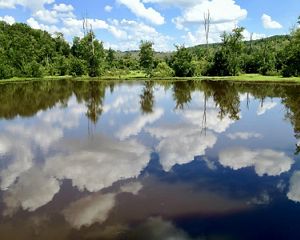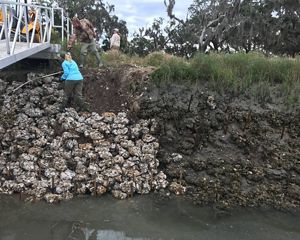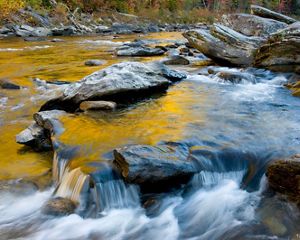Description
Description
A roaring waterfall rushing over rock ledges, cave-like crevices and 30-foot-high cliffs aren’t what normally come to mind when you think about Georgia’s coastal plain, but Broxton Rocks Preserve isn’t just any place.
Unique elements make it both a sought-after place to experience (visitors from all over the country and internationally routinely fill tours) and a fragile environment in need of protection and conservation. TNC's work preserves the site for the future while enabling more people to experience its magic today.
Ages ago, part of the 15,000 square mile band of sandstone running under this flat coastal part of Georgia was exposed by erosion. Combined with the roaring water of Rocky Creek, a tributary of the Ocmulgee River, and the steady effects of weathering, an environmental anomaly was created, a place where a network of fissures, cliffs and crevices stay cool and moist, juxtaposed with almost desert-like conditions on flat rocks above the fissures.
While this is enough to make Broxton Rocks a site worth seeing, there’s more. Plant life abounds, some not normally found in the coastal region and some growing in unusual ways. Green-fly orchids, for example, which grow on trees, adorn the rock walls at Broxton Rocks.
Located in southeast Georgia in rural Coffee County (population 37,500), TNC’s Broxton Rocks Preserve is 125 miles from Jacksonville, Florida and about 170 miles from Atlanta. An important site for as long as people have inhabited the area – there is evidence of Paleo-Indian people to early European settlers – even today Broxton Rocks is a special place. Every Easter Sunday residents of the area gather at what is often referred to as the “falling waters,” carrying on a century-old tradition.
The preserve’s now 2,764 acres is part of the larger Broxton Rocks Conservation Area which is protected and managed by the collective efforts of TNC, local landowners, Coffee County, the Georgia Department of Natural Resources, Georgia Forestry Commission and other partners. The original tract Broxton Rocks Preserve was purchased by TNC in 1992, with several property additions made since then. Most recently in June of 2021, TNC acquired an additional 1,114 acres just to the east of the main preserve with impressive sandstone outcrops, blackwater streams, and diverse uplands. On this portion of the property, TNC has a voluntary public access agreement in place with Georgia DNR for archery only hunting during turkey and deer season.
Management at Broxton Rocks includes controlled burns in the winter, spring and early summer, critical to maintaining natural plant and animal communities. We plant longleaf pines, wiregrass, and other native herbs to restore natural diversity. We also remove non-native invasive plants and animals where needed, such as chinaberry, Japanese climbing fern, and feral hogs. Our long-term vision is to see most of Broxton Rocks entirely in natural, mature pine woodland by the middle of the 21st century.
Animals At Risk
Eastern indigo snake
Gopher tortoise
Eastern diamondback rattlesnake
Plants at Risk
Grit portulaca
Feather-leaf penstemon
Pineland Barbara-buttons
Yellow flytrap
Hooded pitcherplant
Wire-leaf dropseed
Ecosystems at Risk
Altamaha grit-influenced longleaf pine-wiregrass sandhill
Altamaha grit outcrop complex
Pitcherplant bog



